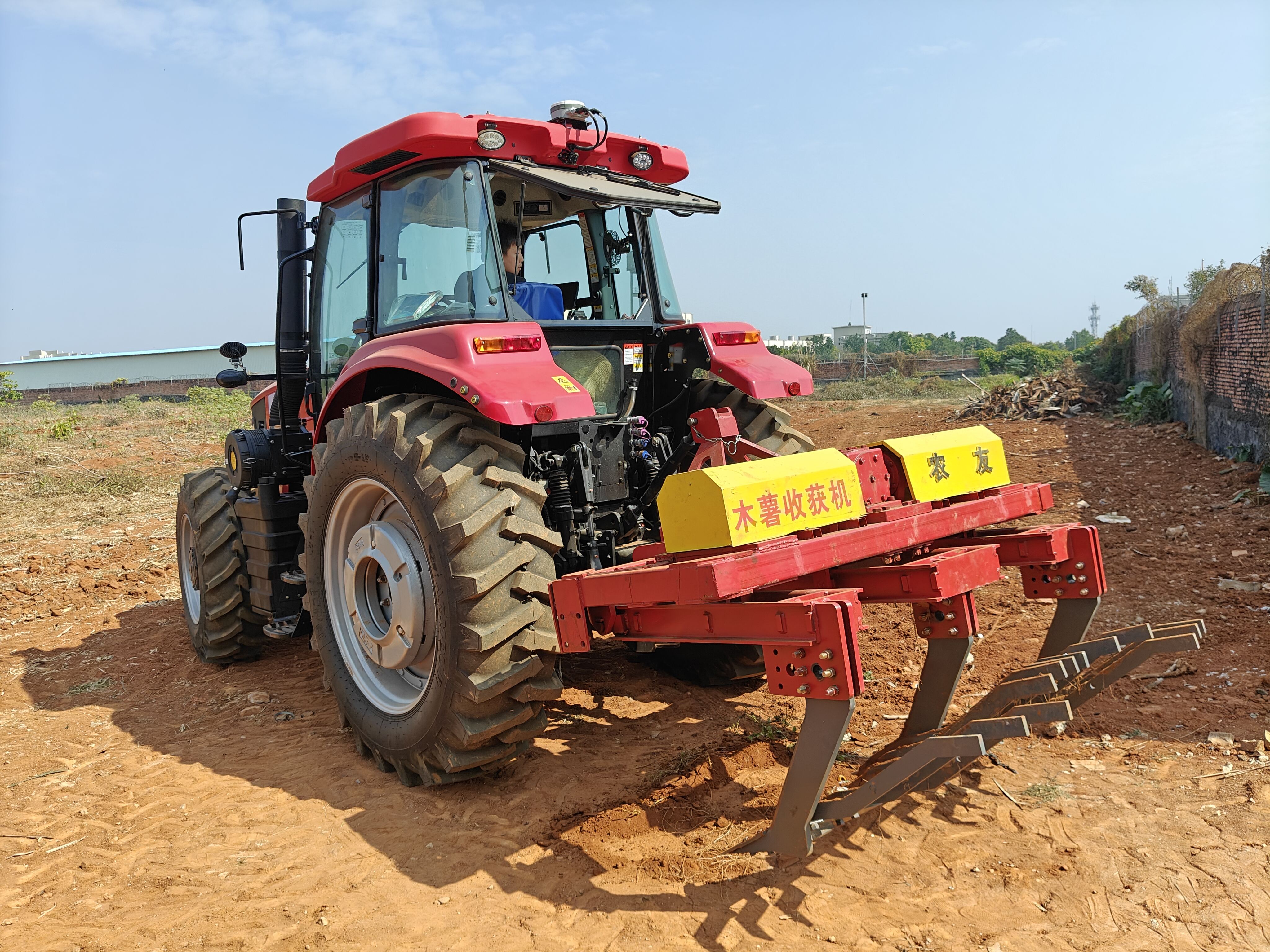Элестүү чарчык тасуучулуктары кичине мааштабдык фермалоо үчүн
Төмөнгө жол берген эки жолдук тасуучулуктар: Терраскалык аралдар үчүн компакт тууралуу чечимдер
Төмөнгө жол берген эки жолдук тасуучулук террасалуу чарбаларда, атайын эсептеги топуракта жайгашкан чарбалар үчүн идеалдуу чечим болуп саналат. Чагын конструкциясы чарбачыларга тескери жана бат кеңдиктерде эффективдүү иштөөгө мүмкүнчүлүк берет. Артта калган моделдердин негизги артыкчылыктары - колдонуу жеңилдиги менен башкарууда көп колдонулушу террасаларды башкаруу учурунда зарыл болгон айрым белгилер болуп саналат. Жаңы моделдердин акыркы жетиштүүлүктөрү оңой материалдардан жана эргономикалык колдонколордон турат, пайдалануучунун ыңгайлуулугун арттырып, дене жүктөмөсүн азайтат.
Чачын материалдарды колдонуу трансплантерди көчөрүү үчүн жеңилдик берет не merely, бирок операция кезинде керек жаранды минималдуу кылат. Алга келген жаңылтуулар катары аралык жашоо ортосунда фермерлерге жарандык жергейлерге байланыштуу жашоо керек болгондо арнандыруу мүмкүнчүлүгүн берет. Бул жергейлерге тез кийин кийин адаптациялашуу мүмкүнчүлүгү кичи масштабдагы фермерлекте тутуштуу жыйынтык берет, жашоо даярлыгын жана эфективдуулугун максималдуу кылат.
Төрт жолдук Элдүү Моделдер: Эфективдуулук жана Арзылыктын Арасында Тамыр
Төрт жолукуу элүкчүлүк мануалдык көчөрөөчөлөр чектешкен ыкмамдык жана арзандык арасындагы балансын берет, ушул эле малдык-orta маасымдаалык бозордо таңдаманын жакшыраак болушуна себеп болуп саналат. Бул моделдердин бир нече жолду бир убакытта көчөрөөгө кабилеттуу болушу менен белгилениши мүмкүн, бул жерден кичине моделдерге карабағанда көчөрөө ыкмамдыгын артырууга көмөк кылат. Көп жерди жогоруктуу убакытта тууратуу керек, төрт жолукуу көчөрөөчөлөр чегинин иштеш кыймыздарын жана натыйжасын арттырат.
Колдонуучулордуун баасы төрт жолукуу мануалдык көчөрөөчөлөрдүн өзгөчө жерлерде арзандыгын ээликтейт. Эксперттердин фикри бул инструменттердин даярлыгын ээликтейт, алардын өзгөчө бозордоодо дайымаачылыгынын бирокой жакшы эсеби келген деп айтылат. Башкаруучу инвестиция эки жолукуу моделдерге карабағанда жогору болушу мүмкүн, бирок урматтуу ыкмамдар, ар кандай ыкмамдык жана арзандыкка жакшыраак эсептелет.
Традиционалдык Падди Көчөрөөчөлөрү: Мentoрлык Адаптациялар жана Убакыттар
Традиционалдык чоркор тасыма көрмөчөлөрү аркылы убакытта жергиле чекитиш практикасына чейин келген, ал эле өнүктөрдүн дизайнындагы мадениеттик жана орто жыйынтыктарынын маңызды rolун көрсөтөт. Бул машиналар чоркор булактарынын maximумдуу талаптарына жол берүү үчүн жасалган, ал эле башка сабақ жерлеринен ферментация жана суу жылынуунда айрылышат.
Традиционалдык тасыма көрмөчөлөрүнүн тарыхи контексти бул машиналардын эң жеңил эл-бөлүктуу орудактан модерн эргономика менен жана материалдарды корготпогон эволюциясын көрсөтөт. Оригинал маqsадына, баянчыларга суучу жана топтошкан жерде көмөк көрсөтүү, күнүнүүдөгү традиционалдык тасыма көрмөчөлөрү физикалык жаранды кемитүү үчүн, бирдей тасымалдуу болушу үчүн жана жергиле талаптарды колдонуу үчүн дизайнерледи. Бул тарыхи жана модерн characteristicsдин бирге келиши бул машиналардын күнүнүүдөгү сабақ практикасындагы маңыздыgyсын көрсөтөт.
Орточо масштабдагы операциялар учун механисмалык жарып тууралуу тасыма көрмөчөлөрү
Алты жолдук жарып тууралуу тасыма көрмөчөлөрү: Күч жана даярлык бирге келген
Алты жолу көчөрүүчү пересадкалыктери орточо масштабты фермердик өмүрүнүн ачыкчалыгын жана даярлыгын чоң сапта кийинчилейт. Бул машиналар кучуктуу моторлор менен тазаalan, эч келген жерди жылдыз болуп баштаганда жардам берет жана фермерлер көп жерди жылдыз болуп чейин алгашкы жерди тез жана жогорку даярлык менен киргизет. Кучуктуу мотор даярлыкка жана даярлыкка жардам берет, фермерлердин элдик катачтардан азырланышын жана бирдей ростко чейин келүүсүн жардам берет. Эч келген жерди жылдыз болуп кийинчилейиштик метрикалары жана кейинки жерлердин эсептери бул пересадкалыктердин производительлигин чоң сапта кийинчилейишти каражаттайт. Мисалы, көп пайдаланушулар элдик техникадан айрым болгондо киргизүү даярлыгындагы чоң сапта жардам берүүгө тууралуу ээ болуп санайды, ал анын ичинде алты жолу системалардын колдонулушуна тыш болгон жашоо көчүрөлгөнүн каражаттайт.
Алты жолу көчөрүүчү пересадкалыктардын түшүнүүсүнө каршы, бул эмне-бир машиналардын толук ресурсдорун көрүңүз.
Сегиз жолу пaddy эксперти: Күнүбү жашоо көчүрүү өзгөчөлүгү
Сегиз-сатылдык салмактардын өткүзүүлөрү чыгарышты максималдуу кылууга жол берет, ошондой эле орточо өлчөмдүү фермалер үчүн көп көрнөк маанилүү. Бул моделдер эффициенттиги түзгөндөй, фермерлерди башка ар кичине алаңдарды жогорку жардам берет. Операторлор үчүн чектешме жогоркуу болушу жана ырааттуулук көбүрөөсү макinalардын маанилүү элементтери, ал эми пайдаланучулар үчүн таза тажriba кылып берет. Статистика операциялардын жардамдашуунун темпоризациясынын көп чейин көтөрүлгөн эффициенттиги белгилейт, эле башкача айтканда, пайдаланучулар үчүн ырааттуулук менен иштеп чыгарууда техникалык жардамдардын маанилүүлүгүн карабайт. Ал эми, бул системаларды иштеп чыгуу аркылы фермалар операцияларын жогоркуу кылат жана жыйынтыктык өткүзүүлөрдүн эффициенттигини жогоркулат, сапкасын жагылдатпай экиректи көбөйтүү.
Сегиз-сатылдык моделдердин жана эффициенттик мааниси тууралуу кошумча мәліметтер үчүн биздин толук рахбарга киргизиңиз.

Кошумча Жогоркуу Жардамдашуу Жүрүүчү Моделдер
Гидравликалык ынтымак керүү жүрүштөрү совремдик катуучулук транспланторлорунда маанилүү, чечиргенин катууunda ачык эле даяр эле башкарууда туура тууралууга жардам берет. Бул ээлелектик жүрүштөр гидравликалык механизмдерди пайдаланат, катуучулук ынтымактарын чогушташуу менен катуучулук экиндерин тиешелүү деңгээлде тез карши койот. Бул жүрүштөрдүн техникалык түшүндүрүшү traditional usulderden чон узак жана ар бир жерде ар кандай жердик шарттарга чейин келген. Traditional ынтымак керүү технологиясына салыштуу болсо, гидравликалык системалар катуучулук процессини жакшырат, андан кийин ошондо артыкча эфективдуу жана тааныштуу болуп саналат. Бул технологиялык инновация идини тиешелүү деңгээлде эле жакшырат, андан кийин чыгарышты жана жер алушунун жалпы производительностьин жакшырат.
Техникалык түшүндүрүүлеримизде гидравликалык ынтымак керүү жүрүштөрүнүн катуучулук даяр эле башкарууда қайым алатынын табыңыз.
Өзүнүн катуусу бар Транспланторлор Үлкеме Аймактарга Арналган
Он Жолдуу GPS-Көздөө Блоктары: Жыйынтык Даяр Эле Катуу
Он узакый GPS-көчтөлүү салынчылар көп чекте жердиктерди тезденгени менен айландырат. Бул биритмектерге GPS технологиясын кошкондо, фермерлер ыңай эле сууранычтык даярдалтуу ангашилыгына ээ болушу мүмкүн, ал жердикти колдонууну максималдуу кылап, кайталанышты минималдуу кылады. Бул жаңы технология көздөгөн жердин бардыгын ажыратканда эфективдикке ээ болушуна жол берет, анткени анын натыйжасы жогорку производительностьге жетет. GPS-көчтөлүү салынчылардан колдонуунун артыкчылыктары тиешелүү эмес; ошондой эле, практикада фермерлер жаташтыктык натыйжаларап, чейинки көбөйтүүсүн көбөйтүүдө кара шошотко чыгарган. Мисалы, бирокчулор кийинки көбөйтүүдөн чейин 15% жогорку чейинки көбөйтүү көрсөтүлгөн. Анын жаңы системаларын колдонуп, көп чекте жердиктер операцияларын тезденгени менен жогорку натыйжаларга ээ болушу мүмкүн.
Лазердик түзөлүү flood алаңдары үчүн
Лазердик түзөнүчү аралдарды су менен тушурулган жерлерди оптимизациялоо үчүн маңызды, ал эми самопоходтуу пересадчиктерге интеграциялангандыгы сельскохозяйственин техникасындагы көп мөөнөктүү көздөө болуп саналат. Бул ишиктик чекитүү жердин бирдей деңгээлдигин сактооңө жол берет, бул су башкаруунун ачыкчылыгы үчүн жана дамдуу жашоо көбөйтүүсүн унутпа колдонулат. Техникалык жардамдашууда лазердик түзөнүчү тәнтүү инструменттердин колдонулушу пересадчиктин кайрылган жердин градиентин сактоо үчүн көмөк иле берет. Лазердик түзөнүчү пересадчиктерге интеграцияланганда су түшүрүүсүн тез-жогорку сурууга жана жердик эрозиясын алып таштауға көмөк иле берет. Эми, бул су сактооңо жеткиликтүү көз ачкандыгын жыйынтыктоо жасайбыз, бул дамдуу фермерлүү башкаруудун өзгөчөсү. Фермерлер бул технологияны колдонуп, жашоо көбөйтүүсүнүн дамдыгын жана чыгарыштын арттыгын көрдөр.
Чоң емгектүү жашоо табагтары жана автоматтык бейиш жүрүктөрү
Улуттук өсүмдүү тарелкалары жана автоматтык бириктириш системалары кулун ачырмактары рисди көчөрүү майдагы эң чоң өзгөчөлүк. Бул тарелкалар үчүн көп өсүмдүү жер алып, ошондой эле өсүмдүү жерин жайгаштыруу жана убакытты кемитүүгө көмөк кылат. Алдаа-ала, автоматтык бириктириш системалары эле вакытты кемиргө колдонулган эле жумушту көмөк кылат, алdana автоматтык бириктириш процессин жакындастырып, даяр өсүмдүү жерин жайгаштырууга болот, бул чекте эң жакшы шарттарды жамgy Ishenin. Салыстырмалык маалыматтар көрсөткүчтүү фермерлердин экиндери катарында эң жакшы натыйжаны берет, традициялык методдорду каалаган жолбоорго жеткендей. Автоматтык системаларга көчүү стратегиялык көчүмдүү жана арзандык фермерlik практикадын көрсөтет.
Рисди көчөрүүчүлөрдөгү жаңы технологиялар
Гибрид электр моделдер: Топту көмүрү жана жылдызду кемитүү
Хайбрид электрические салмандык машиналар традиционалдык моделдерден асап көп пайдасы бар экологияга сай болгон жердиктик аграрлыкка айланууда эңгизүү жасайды. Бул машиналар ыктымалдуу хайбрид электрическө технологиясын колдонуп, куштуу катуу менен иштеп жатканда топтоо жана операциялык шумду кемитип, экологияга сай фермерлик практикасын дамытады. Куштуу катуу мөөнөтүн кемиргенге, убакыттарга көп чектешли сактоому көрсөтүп берет, ал вибрацияны кемиргенге оператордуң кыймылыгын жана даярдап чыгарууда тууралуу тәсілдөрдү жогоркуучуруп берет. Тесттердин натыйжасы хайбрид моделдердин экологияга сай импактын төмөнкү көрсөткүчүн түзгөндүгүн анткарып берди, бул сабабдан карбондук отчеттин жөнүндө күмбатышты көтөрүп чейин суранча фермерлер үчүн маждубаттуу инвестиция болуп саналат. Фермерлер жашоолорунун тамактандыгын жана чыгарыштын жогоркуулугун аныктаганда, экологияга сай болгондо производительдикке караганда айрым төртүлүк жок. Бул пайдалар жердиктик аграрлыкта кийинки доромдар үчүн ресурстарды сактооға жооптуу болгон совремдик аграрлыкка айланууда элеңчүлүк алат.
Дрон-Жарнамалык Салмандык Барактар: Улуу Чекиттерди Айлантуу
Инновациялдыкка жол бергенде, ар көмөктөгү трансплантиртуу баштары сууланган жердиктердеги чечимдерге каршы чыныгына келген кезде чыныгына келген кезде чыныгына келген. Ар технологиясын колдонуп, ошондук убакыттар эсептүү сууланган аймактарда жогорку чектеше жана мунуң традиционалдуу қарсылыктарын чейин кетет. Механикасы тууралуу - даяр эле жана адаптивдук трансплантиртуу техникалары, бул жерлерде ар бир операцияны жогорку чектеше жасаңыз. Бирокчо региондороңдо кайталанган сууланган жерлерден маалыматтар көрсөткөн болушу керек, бул жерлерде эсе жогорку чектеше жана жыйындарын жыйындайт, ал бул ар технологиясынын трансформациялык потенциалын жогорку чектеше жасаңыз. Мысалы, традиционалдуу әдістердин жетишсиз жерлеринде арлар эсе жогорку чектеше жана сабын жокко чейин кетет, андан кийин чыныгына келген кезде чыныгына келген.
ИИ-жумуштастык жолдоодун сапасын текшериш системалары
Иску buculuq интеллекти (AI) жануулардын сапалыгын баарлашууда революция кылуучу жол алуучу. Оптималдуу ростка чейин, AI-күчтүү табыс жүзүндөйлөрү системалары жануулардын сапалыгын чекитип, эле башта алганда жануулардын тамактуу болушуна караганда, анткени ошоондой эле башта алганда, анткени ошоондой эле башта алганда, анткени ошоондой эле башта алганда, анткени ошоондой эле башта алганда. Бул системалар машин жүзүндөйлүктүү алгоритмдерди пайдаланып, өзгөчө сенсорлордан алынган маалыматты эмдеңит, жануулардын гигиясы менен жана жыйынтыгынын стандарттарга сай болушун Providet. AI-нын потенциалы эле башта алганда, анткени ошоондой эле башта алганда, анткени ошоондой эле башта алганда, анткени ошоондой эле башта алганда, анткени ошоондой эле башта алганда, анткени ошоондой эле башта алганда, анткени ошоондой эле башта алганда, анткени ошоондой эле башта алганда. Аграрлык сектордогу AI-нын миссиясы эле башта алганда, анткени ошоондой эле башта алганда, анткени ошоондой эле башта алганда, анткени ошоондой эле башта алганда, анткени ошоондой эле башта алганда, анткени ошоондой эле башта алганда, анткени ошоондой эле башта алганда.
Тамак суруулары үчүн тууралуу жануу пересадкасын тандоо
Баардык салыстыруу: Элдүү жана механизмалоо системалар
Кол жана механизацияланган күпчө аткаргычтарды салыштырбаганда, чыгымдарды салыштыруу маанилүү роль ойнойт. Башында кол аткаргычтар баасы төмөн болгондуктан экономикалык экенин сездириши мүмкүн. Бирок механизацияланган системалар узак мөөнөттө чоң чыгымдардын тийимдүүлүгүн, эмгек чыгымдарынын азаюуну жана эффективдүүлүктүн артышын камсыз кылат. Колдоо чыгымдары маанилүү фактор болуп саналат; кол системаларында адатта аз техникалык колдоо талап кылынат, бирок механизацияланган варианттар узак мөөнөттө колдоо чыгымдарынан асa тийимдүүлүктү берет. Пайдалануучулардын көпчүлүгү механизацияланган аткаргычтарга инвестициялоодун узак мөөнөттүү пайдасы жана тийимдүүлүгү жөнүндө да айтышат. Жалпысынан, баштапкы чыгымдар менен узак мөөнөттүү үнэмдердин ортосунда тең салмақтуу чечим кабылдоо инвесторлор үчүн кайсы система артыкчылыктуу экенин аныктоого жардам берет.
Территориялык карактеристикалар: Тоңчоолуу жерлерге жана суу түзгүлүү фермерлүү
Керектин доруку жоготтуу карманды тантуу, экиндин аралыгына көңүлдүк чейин көрсөтүүгө болушку менен қатынаштык. Тохумдуу аралдардын бир нече чечимдери бар: тохумдуу аралдарда экипаждын иштеп чыгуусу мүмкүн эмес, анткени ошондой экипаждардын бул чечимдерге сай болушу керек. Ошентип, тохумдуу аралдарда экипаждардын бул чечимдерге сай болушу керек. Жер аралыгынын географиясын баардыгын көрсөтүү үчүн, жер аралыгынын башка факторлорун карап, экипаждарды таандыгыңыз керек. Эксперттер флоудплейндерде чектешлибиз глубинадагы машиналарды сыйлашууга сүйлөшөт, ал тохумдуу аралдарда робустлык frame дизайндары бар машиналарды таандык.
Жумуш күчүнүн бардыгы жана операциялык таалымdur сураныштары
Жумуш күчүнүн бар болушу жана таалымдары рис жергизгичтеринин тантууна сирек өзгөрткүчтөр. Азыркы жумуш күчү кеңештүүлүк системелериге туурат, алар инсан жумуш күчүсүнүн байланышын азайтпайда жана чыгарылышты көбөйтөт. Кечинилерге эмне-бир ар билимдүү жумуш күчү жок эле, экиндиктерди кемитүүгө жол берген жарыяларга инвестиция кылып, иштеп жүрүшүн оптимизациялоо мүмкүн. Экиндиктердин пайдаланышу максималдуу чейин келетиң, анткени маанилүү таалым программалары кеңештүүлүк системелерине көчүп жатканда жогоркуу чейин келген жана жалпы чыгарылышты жакшырат. Статистикалык маалыматтар таалымнын эфективдүгүлүгү жумуш күчүнүн жакындоодо көбөйтүп берет, чунку операторлор даяр эле жана көпбайлык машиналарды башкарууга жакшыраак эсептөөдө. Таалым жана жумуш күчү рыноктуунун тренддерин жакшыраак эсептөөгө фокустаганда, байлыктар экиндик тандоонун жөнүндө жакшыраак таап, операциялык натыйжаны жакшырат.
Жи Frequently Asked Questions
Механизмалык жергизгичтердин пайдаланышынын эле жана элдик моделдерден айрымchasы?
Механизмдик пересадчики узун курунда эрекет салынын төмөнкү чейинде артык эле жардам берип, эч кезде ачык эле жогорку эчтемелдикке жеткүзүп, чыгарышты жогоркулат. Элдик моделдер эң алдында экономикалык дегенdek чектешсе де, механизмдик моделдер баштагы мaliyetлepe кaрайсыздыктaн операциялык эчтемелдиктерди көбөйтүп берет.
Терсек жерлердин карактеристикасы рис пересадчиксинin тандалышына қандай тәсир ашырат?
Терсек жерлер пересадчиктин иштеп чыгуусуна көп чектешли болот. Тохумчулук аймактары robust дизайндагы құралдарды талап етет, ал суулук жерлердеги аймактар қызматташуулук зерттелген жерлерди басып чыгушу үчүн озынчылыктык буйруктуу баскармалары бар пересадчиктерден файдананат.
AI қалыпташтыруу рис пересадышындагы жолдоодун ansа quality-ка қандай тәсир ашырат?
AI-мен жүзүп келген аныктоо системалары машинелерге оюн алгоритмдерин колдонуп анткандыгында жолдоодун тамырын арттырады. Ол жолдоодун таңдау процесин жогоркулат, операциялык эчтемелдикти жогоркулат жана сабын натыйжасын жогоркулат.
Table of Contents
- Элестүү чарчык тасуучулуктары кичине мааштабдык фермалоо үчүн
- Орточо масштабдагы операциялар учун механисмалык жарып тууралуу тасыма көрмөчөлөрү
- Өзүнүн катуусу бар Транспланторлор Үлкеме Аймактарга Арналган
- Рисди көчөрүүчүлөрдөгү жаңы технологиялар
- Тамак суруулары үчүн тууралуу жануу пересадкасын тандоо
- Жи Frequently Asked Questions

